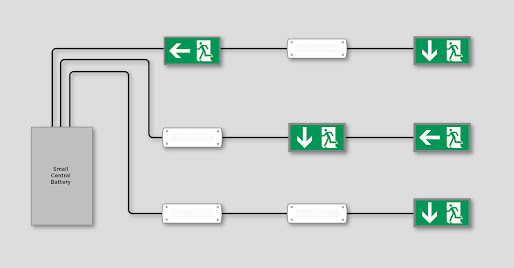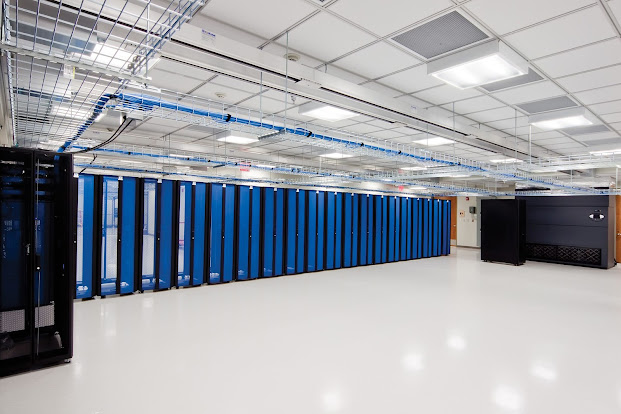Grounding in the data centre 數據中心接地系統
主要作用:- Establish voltage reference
- Clear electrical faults
- Provide RF/ESD discharge path (SRG)
- Carry lightning currents
接地阻值 < 1 Ohm,要求所有金屬物體都要接地,包括:機櫃,UPS,架高地板
Common Mode Noise (CMN)
- The voltage between neutral and ground
- 要求:
- Preference < 1 Volt
- Acceptable up to 1% of line/phase to neutral voltage
- The general recommendation by vendors < 3 Volt
- 電纜越長,諧波越多,相位不平衡會增加CMN
Location of the isolation transformer? 隔離變壓器放哪裡?
- Iso-Tx: delta-wye type
- Should be as close to the ICT equipment as possible
- PDUs with built-in isolation transformer provides the best performance
- Filtering of power disturbances
- Reduction of Common Mode Noise (CMN)
- K-13 type Tx is the most common type for data centres
- In computer rooms with high harmonic content, one might want to consider upgrading the neutral to double size.
Forms of Distribution boards 配電櫃/箱的間隔
- Form 1 - No separation
- Form 2 - Separation of busbars from other functional units
- Form 3 - Separation of busbars from all functional units and between all functional components but not their terminations
- Form 4 - Separation of busbars from all functional units and between all functional components including their terminations
詳細分類可參考之前文章:【低壓制櫃設計】低壓制櫃的間隔和形式(Segregation & Form of LV Switchboard)
IP (Ingress Protection) grades 防塵防水等級
- Most commonly found are IP20 / IP21 for UPS and other electrical systems in the data centre.
- Selecting the digit 1 is sometimes useful as the UPS systems may be located in an area where overhead air conditioners are being applied. (一般情況UPS都為IP20)
Power quality: guidelines 電能質量要求
主要考慮參數:
- Voltage: Nominal +/- 10% (EMSD要求voltage drop不可以超過 4%)
- Frequency: Nominal +/- 10%
- Common Mode Noise: < 1% of Phase to Neutral
- Total Harmonics Distortion of Voltage (THDv): < 8% (non-linear load)
- Total Harmonics Distortion of Current (THDi): < 12%
CBEMA / ITI(C) curves
- CBEMA - Computer and Business Equipment Manufacturers Association
- ITI(C) - Information Technology Industry Council
- The CBEMA (ITI or ITIC) curve indicates what voltage levels are acceptable for ICT equipment. All manufacturers comply with the CBEMA curve.
- 黃色高光區域:設備正常運行
- 右上Prohibited Region:設備可能損壞
- 右下No Damage Region:設備不會損壞,但亦不會運行
Label power versus actual power consumption(標籤上的功率 vs 實際使用功率)
- Real power usage is typically 20-40% less than the label/plate power
- based on the actual hardware configuration and other factors such as CPU load etc
Sizing power usage for the data centre (數據中心的電力需求估算)
Average Watt/Floor Area (sqm) - Power Density
- Low-density data centre: 500 W/sqm
- Medium-density data centre: 1,000-1,500 W/sqm
- High-density data centre: 2,000-2,500 W/sqm
- Extreme-density data centre: > 3,000 W/sqm
Rack Usage Power - Rack Power
- Standard racks: 1-3 kW
- Mixed racks: 5-8 kW
- Blade servers: > 15 kW (as high as 28 kW per rack)
- Add non-standard size equipment
- Mainframes, storage, etc
- UPS power: Add 35% to cater for a buffer.
- Lighting power: can also refer to the Building Energy Code requirement to estimate
- Cooling power: UPS power x 1.2 for refrigerant-based systems / UPS power x 1 for chilled water based cooling.
- Safety factor: 20 ~ 25%
Sizing power usage for Generator-Set(後備發電機的電力需求估算)
主要考慮因素:
- 實際後備負載需求:kVA/kW requirement of the installation attached
- 設備啟動時的衝擊電流:Expected Inrush currents on the generator during operations
- Harmonics returning from the connected installation












































